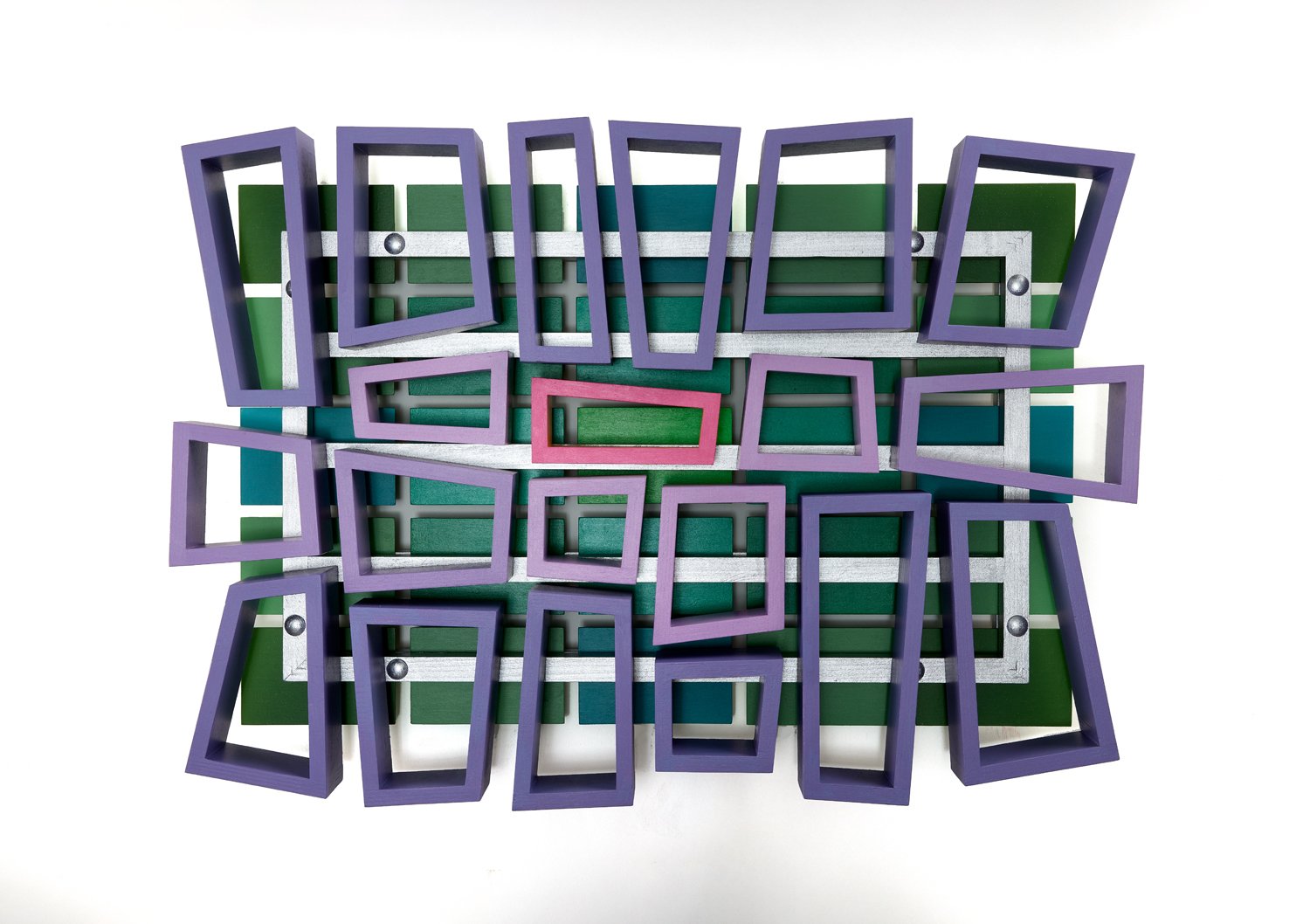Derek Morris
Derek Morris
Derek Morris's mixed media sculptures are a testament to the innovative spirit that contemporary sculpture can embody. With an engaging and harmonious use of color, form, and space, Morris's works offer a refreshing and energetic perspective on the medium.
Morris's manipulation of shape and form is both thought-provoking and aesthetically pleasing. His sculptures are characterized by a rhythmic complexity that invites the viewer to navigate around them, discovering new angles and intersections. Each piece functions as a self-contained universe, where geometric forms play off one another in a delicate balance. The seemingly spontaneous arrangements of rectangles, squares, and other forms belie a careful consideration of composition and weight, resulting in sculptures that are both dynamic and stable.
The color palette chosen by Morris adds another layer of depth to his work. Far from arbitrary, the colors are carefully selected to create visual pathways through each sculpture. The interplay of hues ranges from subtle to striking, guiding the viewer's eye and highlighting the multidimensionality of the work. Whether employing a monochromatic scheme or a more vibrant array of colors, Morris demonstrates a sophisticated understanding of how color can shape the emotional and visual impact of a piece.
The use of mixed media allows Morris to explore texture and materiality in a manner that enhances the sculptural experience. The combination of different materials adds a tactile dimension to the work, encouraging closer inspection. The juxtaposition of rough and smooth surfaces, matte and glossy finishes, creates a sensory dialogue that complements the visual one. This attention to the physicality of sculpture is a reminder that these works occupy the same space as the viewer, existing not just as visual objects but as entities to be interacted with.
Morris's sculptures also engage with the architectural. They evoke the facades of buildings, the complexity of urban environments, and the organized chaos of cityscapes. However, they are never so literal as to become representations; instead, they exist on the boundary between the abstract and the referential. This interplay between the imagined and the real invites contemplation, allowing each viewer to bring their own experiences and interpretations to the work.
The scale of Morris's sculptures is worth noting as well. They command the space they occupy, but without overwhelming it. This careful calibration of size ensures that the sculptures are both approachable and imposing, allowing them to converse with the surrounding environment in a way that is both respectful and assertive.
One of the most compelling aspects of Morris's work is the sense of movement that pervades it. Despite their solidity, the sculptures seem to be in a state of potential motion, as if the forms are caught in a momentary pause and could resume their dance at any second. This kinetic energy keeps the sculptures alive; they are not static objects but dynamic participants in the space they occupy.
Another notable element is the way Morris plays with the concept of the frame. His sculptural forms often include framing elements that both contain and liberate the space within. These frames act as windows or portals, offering glimpses into different planes of color and texture. They are boundaries that invite crossing, thresholds that beckon the viewer to move closer, to look deeper.
Derek Morris's mixed media sculptures represent a vibrant and thoughtful exploration of form, color, and space. They are at once playful and profound, offering a visual feast that rewards both casual appreciation and deep study. Morris has created a body of work that is both cohesive and diverse, with each piece contributing to a larger conversation about the possibilities of sculpture. His works are a valuable addition to the landscape of contemporary art, and they stand as a beacon of creativity and exploration.
Derek Morris's work is an exploration of geometry and its potential to evoke emotion and narrative. His sculptures are not mere exercises in form but narratives in space, telling stories of harmony, tension, and resolution. Each piece seems to capture a moment of equilibrium in a broader story of shapes in dialogue, a conversation that is both internal to the work and extending outward to the viewer.
The physical presence of these sculptures is undeniably compelling. Morris has a distinct ability to make his materials speak, to imbue them with a life that transcends their inanimate nature. There's a palpable energy in the way the elements of each sculpture interact, an energy that can be felt as much as it can be seen. This is sculpture that demands to be experienced in the round; it is a participant in the space it occupies, shaping and defined by the light and environment around it.
Morris's work also subtly engages with the legacy of sculpture. There is an echo of the constructivist movement in his embrace of industrial materials and geometric abstraction, yet his work is distinctly contemporary. He recontextualizes these historical threads, weaving them into something entirely his own. In doing so, he shows a deep respect for the past, but also a desire to push beyond it, to explore what sculpture can become rather than what it has been.
Derek Morris's mixed media sculptures are not just objects but experiences. They are conversations in color and form, spaces within spaces, and stories told without words. They are a celebration of the power of sculpture to move us, to challenge us, and to open our eyes to the complex beauty of the geometric world.
By Marta Puig
Editor Contemporary Art Curator Magazine












